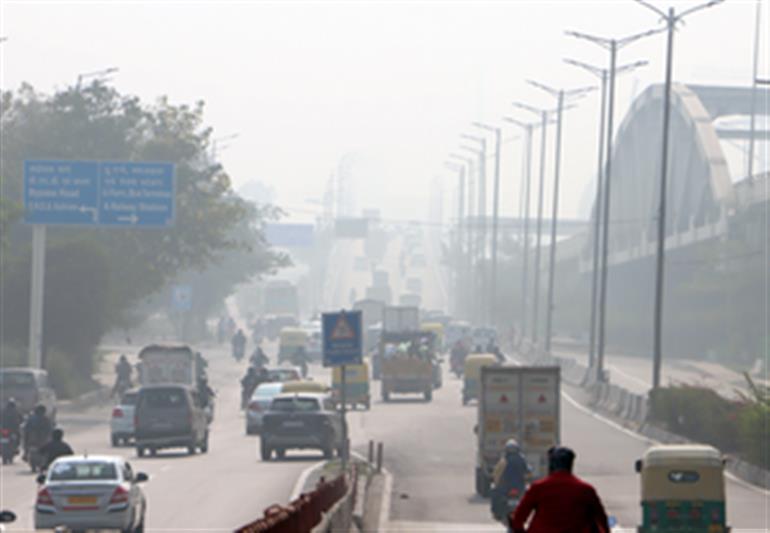Despite air quality in the national capital falling into the ‘very poor’ category, city doctors on Tuesday reported a 30 per cent rise in respiratory diseases such as asthma and chronic obstructive pulmonary disease (COPD).
A thick layer of smog engulfed Delhi on Tuesday morning as the city’s air quality deteriorated to the ‘very poor’ category. According to the Central Pollution Control Board (CPCB), 27 monitoring stations in the national capital fell into the red zone, recording an Air Quality Index (AQI) of 317 around 9:00 am.
Health experts blame changing climate and pollution levels for the rise in respiratory diseases. Children, pregnant women and the elderly are most at risk.
Dr. Vikas Maurya, Senior Director and HOD Pulmonology, Fortis Hospital, told IANS that as winter approaches and pollution increases with low AQI, cases of acute bronchitis and asthma attacks have increased.
“These respiratory diseases have increased by 30-40 percent. Pollutants containing PM 2.5 and PM 10 as well as dust particles and vehicular emissions in increased concentrations cause irritation and inflammation when inhaled,” said Maurya.
Children, the elderly, those with weakened immune systems, and those with pre-existing lung diseases such as asthma, COPD, and heart problems are at higher risk.
These people are likely to present with symptoms such as excessive coughing, mucus production, sneezing, chest pain, and breathing problems.
“With winter season approaching, stubble burning, vehicular emissions, air pollutants have crossed levels suitable for human health. These toxic gases irritate the lungs, especially in the elderly and in asthma and COPD patients,” says Bobby Bhalotra, professor and senior consultant, Department of Chest Medicine.
Experts have advised people to take precautions, such as wearing masks, and using air purifiers indoors if they are bedridden and in the high-risk category. They also asked to avoid outdoor activities if the air quality is bad.
Dr Vikas Mittal, pulmonologist at CK Birla Hospital’s respiratory medicine department, told IANS that asthma cases are also on the rise due to climate change and increase in pollen count. Allergic rhinitis is also increasing due to similar triggers, he said.
“Current climate change has resulted in fluctuating temperatures, which, along with higher pollen levels, are exacerbating asthma and other respiratory diseases. The conditions are complicating air quality, which already has respiratory problems. People with conditions make it difficult to breathe easily,” said Mittal. 20-30 per cent cases of asthma and other respiratory diseases are reported in the hospital.
Experts advise people suffering from lung diseases to take their preventative medicine regularly and keep indoor plants and air purifiers to keep the house clean.
Bhalotra recommends immediate medical attention in case of respiratory distress indicated by rapid pulse rate and inability to complete sentences.

